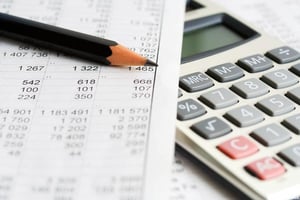 You’ve filed for Chapter 7 bankruptcy and have heard this type of case referred to as “liquidation bankruptcy.” This is because the bankruptcy trustee has the authority to seize a filer’s property and assets to liquidate and distribute the proceeds to your creditors. You look around your home, at the things you have, and the thought of selling everything to pay off creditors is understandably concerning.
You’ve filed for Chapter 7 bankruptcy and have heard this type of case referred to as “liquidation bankruptcy.” This is because the bankruptcy trustee has the authority to seize a filer’s property and assets to liquidate and distribute the proceeds to your creditors. You look around your home, at the things you have, and the thought of selling everything to pay off creditors is understandably concerning.
The good news is that what happens when you file bankruptcy under Chapter 7, “liquidation” of your assets to pay your creditors does not mean that every single item you own will be sold or financial account seized – far from it. Bankruptcy law provides for property exemptions, meaning there are certain things you are allowed to keep, up to established limits on value. The purpose of bankruptcy law is to give you a fresh start, not to strip you bare of everything you have worked hard to obtain throughout your life and leave you with nothing. If you are considering filing for bankruptcy, you should select an attorney who can skillfully apply exemptions and help you retain as much of your property as possible.
What is Exempt Property?
When you file for bankruptcy, one of the schedules you file along with your petition for bankruptcy protection is a schedule of exempt property. Under the Bankruptcy Code, debtors can protect certain types of property from being liquidated to satisfy creditors’ claims. Federal bankruptcy law sets forth the types and value of the property and assets that may be exempted from creditor’s claims. As of April 2016, federal bankruptcy exemptions include:
- Equity in the debtor's primary residence of up to $23,675
- Household goods, furnishings, and appliances of up to $12,625, so long as no one item is valued at more than $600
- One motor vehicle in which the debtor has equity of up to $3,775
Equity equals the amount the property is worth minus the amount still owed on the property. For instance, if the debtor has a car valued at $10,000 but still owes $8,000, they have $2,000 worth of equity and that vehicle is exempt, as it falls within the amount of equity allowed for federal exemption.
Other federal exemptions cover a wide variety of property and financial interests, subject to value limits, including:
- Jewelry
- Tools necessary for your trade or business
- Cash value of life insurance
- Medically prescribed health aids
- Social Security, disability, and most pension benefits, as well as child support or alimony
- Personal injury claims, but not including pain and suffering awards or "actual pecuniary loss."
Any property that fits within the category and value definitions of the Bankruptcy Code exemptions cannot be liquidated to pay creditors’ claims. Property that does not fit within exempt categories and/or that has a value exceeding the exemption limits, will be sold to pay off unsecured debts. Property that is generally considered to be nonexempt includes:
- Second automobiles
- Second homes or vacation homes
- Collections, such as coins or stamps
- Musical instruments not used in your trade or business
- Artworks
- Home electronics that exceed exempt amounts in value
To better know which property may be vulnerable, you should discuss the specifics of your situation with an experienced bankruptcy attorney.
State Law Exemptions Can Apply
The Bankruptcy Code allows each state to establish its own categories and value limits on exempt property. State exemptions are often more generous than federal exemptions. In Minnesota, you can choose which set of exemptions to use in bankruptcy - federal or state. In general, though, exemptions under Minnesota state law are more expansive than are the federal exemptions. Exemptions under Minnesota law include:
- A homestead exemption of up to $412,000 for the debtor’s primary residence, including up to 160 acres of land. If the primary residence and accompanying acreage are used mainly for farming, the exemption is $1,050,000.
- Household furniture, appliances, stereos, TVs, and radios up to $10,800
- Farming equipment up to $13,000.
- Tools and other materials necessary for the debtor’s trade, business or profession up to $12,000 in value. Combined with farming equipment, the two categories combined cannot exceed a value of $13,000.
- Certain life insurance proceeds and the cash value of an unmatured life insurance policies, subject to value limits
- A manufactured home that serves as the primary residence of the debtor
- One motor vehicle with debtor equity of up to $4,800. The amount can be higher if the vehicle has been modified for someone with a physical disability.
- Certain employment benefits, including stock bonuses, pension, profit sharing, annuity, individual retirement account or other plans
- Health savings accounts up to a value of $25,000.
- The family bible, library, and musical instruments.
- A cemetery plot
- All clothing, a watch, and all the cooking utensils and food
- Wedding rings not exceeding $2,940.00 in value.
Wondering What Happens WHen you File Bankruptcy in Minnesota?
If you are wondering what happens when you bankruptcy in Minnesota, you need to understand how the bankruptcy laws and exemptions can protect you. Chapter 7 exemptions can be complicated and require a balancing of whether federal exemptions or state exemptions are most advantageous for your situation. For a free case evaluation to determine how bankruptcy can help you, contact the bankruptcy attorneys of Kain & Scott at 800-551-3292 or through our online contact form.



